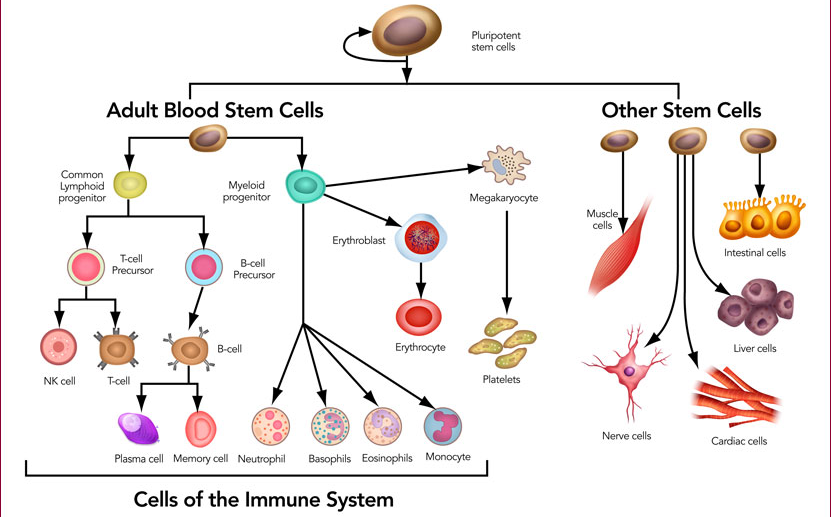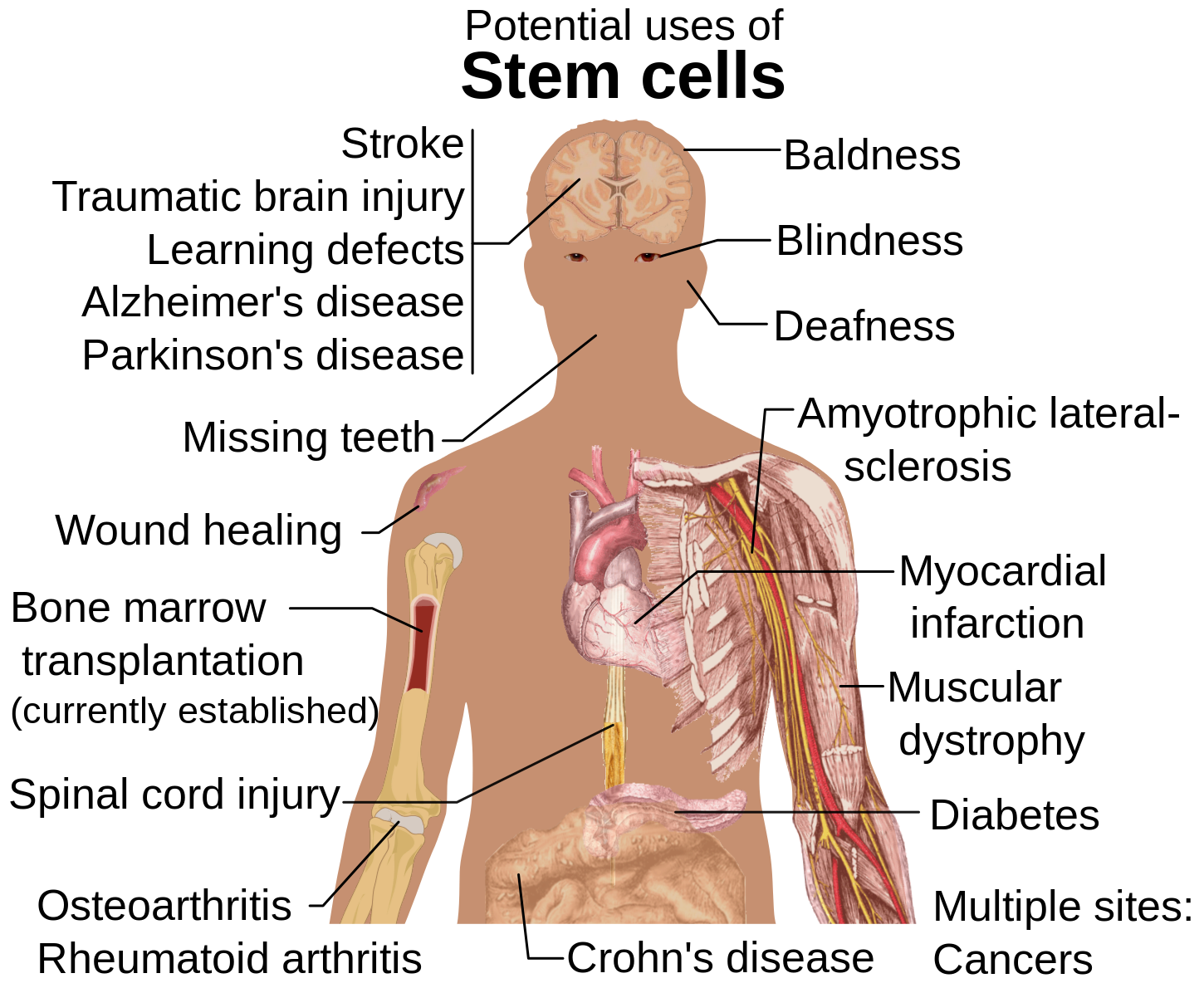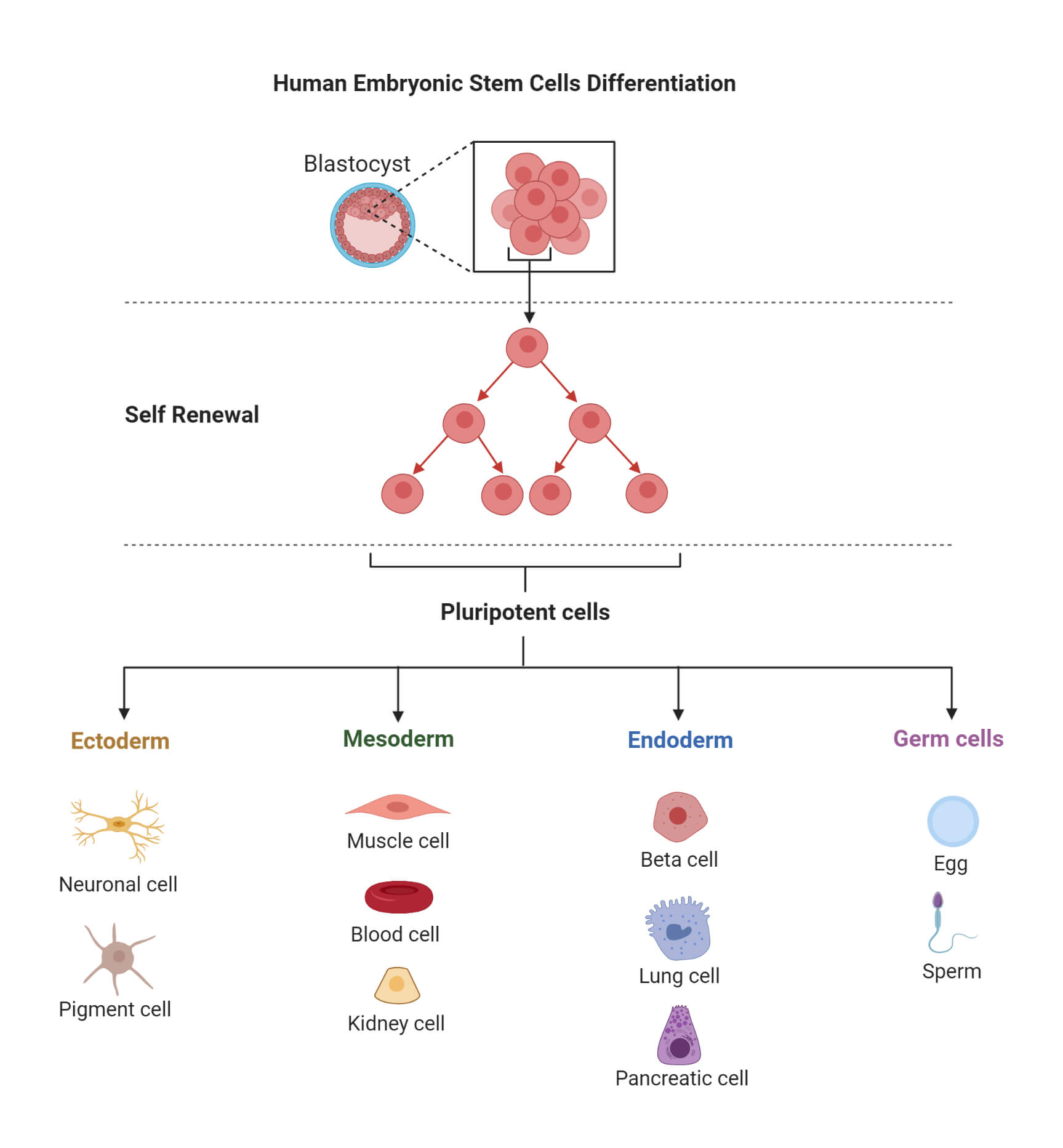List and Describe a Non-human Example of Stem Cell Use
Embryonic Stem Cells are derived from 5-day old. Human stem cells are also being used to test new drugs.

Stem Cells A Brief History And Outlook Science In The News
Stem cell research with examples.

. Embryonic or pluripotent stem cells are taken from human embryos that are less than a week old. Stem Cells originate from different parts of the body. For instance the zygote formed following fertilization of the egg gives rise to types of cells that form particular tissues and organs.
In general there are 4 different types of stem cells used in research and treatment including. The Different Types of Stem Cells. Stem cells are the bodys raw materials cells from which all other cells with specialized functions are generated.
Other mesenchymal and non-mesenchymal stem cell derivatives such as neural cells. Induced pluripotent stem cells or reprogrammed stem cells. Similar to embryonic stem cells but made from adult specialised cells using a.
Embryonic stem cells ESCs These types of stem cells are pluripotent they can differentiate into any other type of cell found in the body and are obtained from the blastocyst. They form a non-complete dentinpulp-like complex in vivo. There are several different types of stem cells you should be aware of.
They are used by the body to repair and replace damaged tissue in the same area in which they are found. Learn how to define a stem cell explore how they are. These cells possess one major disadvantage.
Stem cell an undifferentiated cell that can divide to produce some offspring cells that continue as stem cells and some cells that are destined to differentiate become specialized. Scientists call a stem cell an undifferentiated cell. Placental and Cord Blood Stem Cells.
In the animal rights movement it is common to distinguish between human animals and non-human animalsParticipants in the animal rights movement generally recognize that non-human animals have some similar characteristics to those of human personsFor example various non-human animals have been shown to register pain compassion memory and some cognitive. These cells are wildly versatile capable of dividing into more stem cells or becoming any type of cell in the human body roughly 220 types including muscle nerve blood bone and skin. Stem cells can also be found in adults but.
Stem cell therapies may offer the potential to treat diseases or conditions for which few treatments exist. Under the right conditions in the body or a laboratory stem cells divide to form more cells called. Trusted by students since 2003.
There is great interest in stem cells because they have potential in the development of. Stem cells are the bodys master cells. These cells like ESCs are considered pluripotent Discovered in 2007 this method of genetic reprogramming to create embryonic like cells is novel and needs many more.
Totipotent - A zygote is a good example of a totipotent stem cell. Human stem cells and drug testing. For example hematopoietic stem cells are found in bone marrow and make new red blood cells white blood cells and other types of blood cells.
Researchers have also recently found stem cells in. Induced Pluripotent Stem Cells. A stem cell is an undifferentiated cell found in the developing embryos of all multicellular organisms.
In some parts of the body such as the gut and bone marrow stem cells regularly divide to produce new body tissues for maintenance and repair. Sources of Stem Cells. Typically these stem cells can generate different cell types for the specific tissue or organ in which they live.
However blood-forming stem cells dont generate liver or lung or brain cells and. Grown in the laboratory from cells found in the early embryo. Stem cells can also be found in adults but.
For example blood-forming or hematopoietic stem cells in the bone marrow can give rise to red blood cells white blood cells and platelets. A skin cell for example that cause it to revert back to a stem cell like state. The term somatic refers to non-reproductive cells in the body eggs or sperm.
A blastocyst is a group of cells that form three to five. Stem cells of human exfoliated deciduous teeth SHED have a faster rate of proliferation than DPSCs and differentiate into an even greater number of cells eg. Adult stem cells cannot differentiate into as many other types of cells as embryonic stem cells.
Stem cell research is an area of research that studies the properties of stem cells and their potential in medicine and therapeutical applications. The human body requires many different types of cells to function but it does not produce every cell type fully formed and ready to use. Harvested from the umbilical cords and placentas of healthy newborns these stem cells appear to be most effective in combating blood and circulatory disorders.
These cells are characterized by high potency which means that they are capable of differentiating into any type of cell in an organism. Patients receiving stem cell transplants from placental or cord blood will need to be a match for the donor as if they were receiving a. Cancer cell lines for example are used to screen potential anti-tumor drugs.
Embryonic stem cells have shown incredible potential in the treatment of many different medical conditions. All other cells arise from stem cells including blood cells nerve cells and others. Stem cells are an ongoing source of the differentiated cells that make up the tissues and organs of animals and plants.
Matured cells are specialized to conduct various functions. They have the ability to turn into any type of cell. These cells are active non-tumorigenic and are multipotent that can differentiate into cells of the endothelium hepatic adipose and even neural tissues.
Generally these cells can develop the kind of cells found in tissues where they reside. Other kinds of cell lines have a long history of being used in this way. Sometimes called the bodys master cells stem cells are the cells.
Adult stem cells can be found in specific tissues in the human body. New medications are tested for safety on differentiated cells generated from human pluripotent cell lines. The human body comprises more than 200 types of cells and every one of these cell types arises from the zygote the single cell that forms when an egg is fertilized by a spermWithin a few days that single cell divides over and over again until it forms a blastocyst a hollow ball of 150 to 200 cells that give rise to every single cell type a human body needs to.
A stem cell is a human cell that can develop into almost any cell type in the body. Cells in the human body.

Stem Cells Sources Types And Uses

Stem Cells Definition Properties Types Uses Challenges

Importance Of Stem Cells Stem Cells University Of Nebraska Medical Center

No comments for "List and Describe a Non-human Example of Stem Cell Use"
Post a Comment